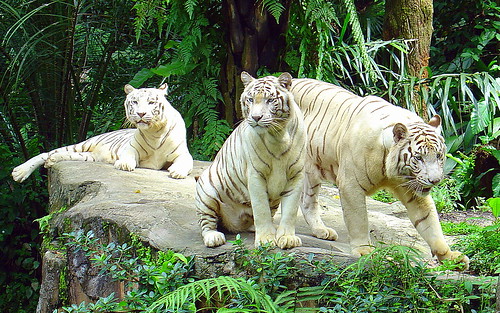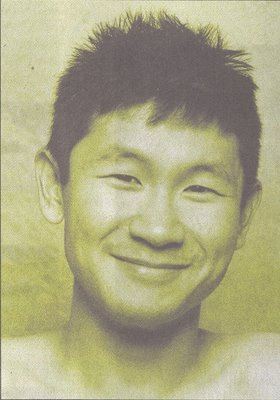
So on Wednesday I attended the NHB/IPS Symposium on “Making a Great Art Museum”. And you know what? It wasn’t that great.
In retrospect, I think the event was sabotaged by the subtitle: “Contending with Southeast Asian Modernities and Art”. The panels of academics and curators didn’t spend much time talking about proposals: instead they agonised over the historiography of art: how the origins of European museums are embedded in cultures of colonialism and objectification; how we’re stuck in the hegemonic discourse of European and American modernism as the centre and all other global modernisms as the under-exhibited periphery.
But Singapore, they gushed, has the unique opportunity to present a new historical narrative of Southeast Asian modernism. We have the wealth, we have the location, and we have the total absence of pride in our own art history that would make us focus exclusively on Singaporean art (okay, they didn’t mention that last point, but it’s true).
What was missing was any sense of what this alternative narrative should look like – perhaps not surprisingly, since Southeast Asian artists began their modernisms rather independently of each other: Vietnam, Thailand, the Philippines and Indonesia all have different encounters between colonialism and revolution and innovation and aesthetics: genuine intra-ASEAN crossovers between artists didn’t start happening till the ‘90s. The speakers’ presentations on their specific fields of study didn’t provide much of an idea of how to unify things.
Yet some constructive ideas crept through the academese:
1.
Expose underexposed histories.
(Prof Adrian Vickers, Director, Australian Centre for Asian Art & Archaeology, University of Sydney)The conventional narrative is that Balinese art didn’t become “modern” until 1930s European artists like Walter Spies and Rudolph Bonnet arrived in Ubud and commissioned traditional artists to paint everyday life instead of mythic subjects. But in fact, some Balinese artists were incorporating contemporary elements into their work by the 1920s.
2. Include marginal communities.
(Dr Apinan Poshyananda, Dir-General, Dept of Cultural Promotion, Ministry of Culture, Thailand)
“Spaces must be open for voices from nomads, tribes,” he says, exposing the “cultural faultlines within nations”, from the. Acehnese to the Rohingya.
3. Work with local stakeholders (Ms Gridithya Gaweewong, Curator and Co-founder, Project 304 & Artistic Director, Jim Thompson Art Center, Bangkok)
I.e. local artists, none of whom were actually invited to speak at this symposium. In fact, it was all curators and academics – no artists at all. Why’s that?
4. Figure out how to include transnational artists. (Prof Nora Taylor, Alsdorf Professor, South and Southeast Asian Art History & Director, Grad Programme in Modern and Contemporary Art History, Theory and Criticism, School of the Art Institute of Chicago)In Vietnam alone, how are you going to classify folks like Viet Q returnee Dinq Q. Le and Vietnamese-Japanese Jun Nguyen-Hatsushiba?
5. Dare to display popular culture. (Oscar Ho Hing-Kay, Programme Ditrector, MA Programme in Cultural Management, Chinese University of Hong Kong)Ho knows how overpopulated the museum scene is going to get: China plans to build 1,500 museums in the coming decade, more than the current number of Starbucks in the country. There’s gonna be tough competition for artefacts. Why not serve as a record of what’s happening in pop culture instead, making yourself immediately relevant and analytical of what’s happening today? (Another tip from Ho: celebrate difference, not sameness)
6. Dare to display material culture. (Assoc Prof Flaudette May V. Datuin, Dept of Art Studies, College of Arts and Letters, University of the Philippines)Datuin’s exhibited chamberpots, watercrafts, dresses, etc, to reflect the way average people look at history. Mind you, this is different from pop culture because it’s based on the curatorial decisions of village people, not fashion and style mavens – it’s about empowering and including local communities who don’t even think of themselves as artists.
7. Create a paratopia
(Ong Keng Sen, Artistic Director, TheatreWorks)As part of his “If I were the Museum Director”, Ong went heavy on the jargon: mondialisation, affinities over ethnicities, a museum of empty space. But what’s at the core of his suggestion is that the museum could be centred on people as much as it is on artefacts: bring in camps and teach-ins and alternative intellectual community gatherings so you have a living space for art creation and analysis rather than just worshipping dead brown and yellow males.
… ooh, and Studio Wong Huzir's Creative Director, Huzir Sulaiman, had an “If I were the Museum Director” speech that was excellent. Besides being terribly funny, this is what he concretely recommended:
8. Don’t try and please everybody.
Given that there are multiple conflicting reasons why a person might want to visit the gallery (e.g. to learn, to show tourists around, to socialize) just focus on one.
9. Your goal should be to deliver great experiences with great works of art.I.e. don’t pile on the history shit too deep. And definitely don’t buy bad art just for the sake of historicizing things. “There are only so many dull images of village maidens in harvest time that ne can take before one runs from the building,” he says.
10. Design your experience with your HEADS:a) Holistic – does the exhibition feel like a coherent whole?
b) Emotional – does it make us proud to be Southeast Asians?
c) Aesthetic – does the space look beautiful even without art in it?
d) Dramaturgical – does it tell a story?
e) Semiotic – does it resonate with complex meanings?
11. Trust the art.
Huzir is uncomfortable with the slogan on the TNAGS website: “Here at The National Art Gallery of Singapore, we bring modern art to life.” To which he answers, “Dead meh?”
12. Finally, assert some political independence.
Don’t list a state-sponsored history. Undermine the chauvinistic narratives of ASEAN’s own government-issued textbooks. “Do not regurgitate the sanitized stories of tyrants and despots.”
Pretty useful, you’d think? But then Kwok Kian Chow, the actual museum director, had to give a wrapping-up speech. And here he claimed that he agreed with Huzir, and since there were so many demands to be made from different prospective viewers he had to satisfy all of them (directly contradicting Huzir’s point number 8.)
Seriously, the folks around me in the audience were horrified at this statement. Was this man being stupid (it was at the end of a looong symposium), or was he twisting Huzir’s words around, assuming we were stupid enough to believe him?
Also worrying me is what happened when I asked a question early in the symposium: what should we do, as art-loving citizens, when a museum censors work or acts unethically? The panel speakers just hemmed and hawed and regurgitated their own agendas without answering my question.
So at the end of the day, what did we learn? What makes a great art museum?

Maybe not this guy.


















































